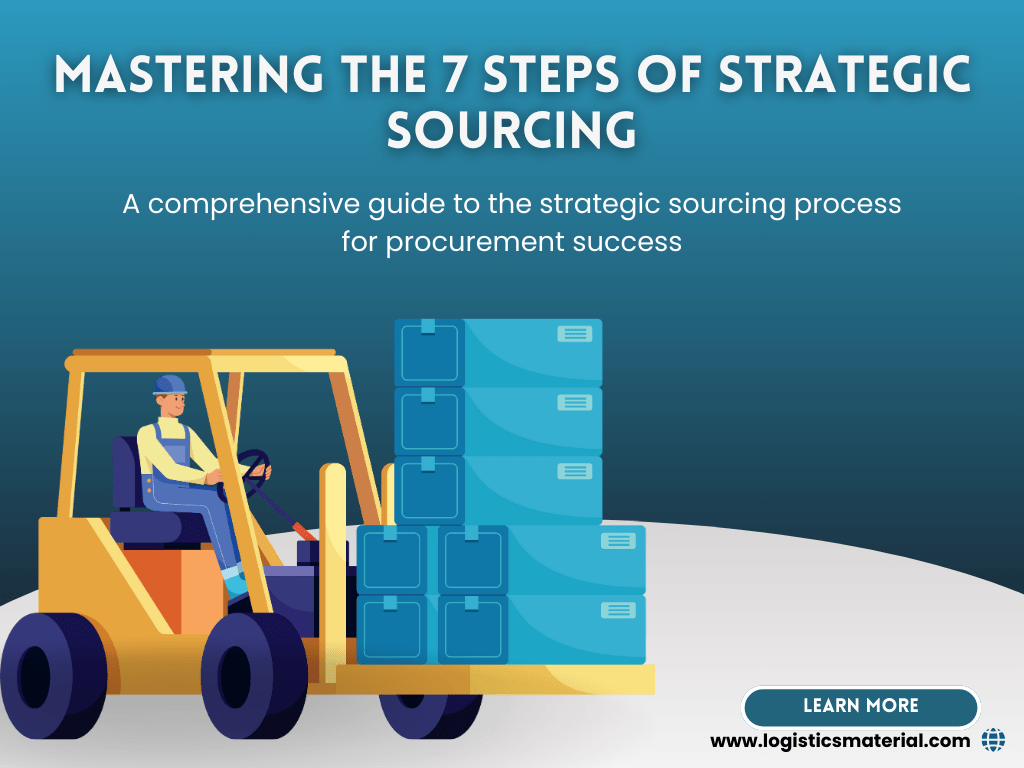Mastering the 7 Steps of Strategic Sourcing: A comprehensive guide to the strategic sourcing process for procurement success
Strategic sourcing is a critical component of procurement that can significantly impact the success of an organization. Mastering the intricacies of strategic sourcing involves understanding and implementing a series of well-defined steps to optimize procurement processes and achieve cost savings. In this comprehensive guide, we will delve into the 7 key steps of strategic sourcing, providing valuable insights and strategies to help you navigate this essential aspect of procurement successfully. Whether you are a seasoned procurement professional or new to the field, this blog aims to equip you with the knowledge and tools needed to excel in strategic sourcing and drive procurement success.
Introduction to Strategic Sourcing and its Importance
Introduction to Strategic Sourcing and its Importance Strategic sourcing is a crucial aspect of procurement that focuses on the long-term value and benefits of the purchasing process. It goes beyond simply finding the lowest cost option and involves a thorough analysis of suppliers, products, and market trends to make informed decisions that align with the organization’s goals and objectives. The importance of strategic sourcing cannot be overstated in today’s competitive business landscape. By implementing strategic sourcing practices, organizations can optimize their procurement processes, reduce costs, minimize risks, and enhance supplier relationships. Strategic sourcing enables organizations to identify the best suppliers, negotiate favorable terms, and ensure high-quality products and services that meet their specific needs. In essence, mastering the 7 steps of strategic sourcing empowers procurement professionals to make strategic decisions that drive value, innovation, and competitive advantage for their organizations. By understanding the intricacies of the strategic sourcing process and its significance, businesses can achieve sustainable cost savings, operational efficiency, and overall procurement success.
How Strategic Sourcing Operates and Why Businesses Should Take It into Account
Organizations may use strategic sourcing as a potent tool to improve their procurement procedures and achieve cost and efficiency benefits. It involves a structured and systematic method of identifying, evaluating, and managing suppliers to ensure the best value for goods and services. By mastering the 7 steps of strategic sourcing, companies can strategically align their procurement activities with their overall business objectives, leading to improved performance and competitive advantage. At its core, strategic sourcing aims to go beyond traditional purchasing practices by focusing on long-term relationships with suppliers, mitigating risks, and driving innovation. By taking a proactive approach to supplier management, organizations can optimize their supplier base, negotiate favorable contracts, and streamline their purchasing processes. Companies that embrace strategic sourcing practices stand to benefit from increased transparency, reduced costs, improved quality, and enhanced supplier performance. By evaluating suppliers based on various criteria such as quality, cost, delivery, and innovation capabilities, organizations can make informed decisions that drive value creation and sustainable growth. In today’s dynamic business environment, where competition is fierce and markets are constantly evolving, strategic sourcing has become a critical tool for organizations looking to stay ahead of the curve. By understanding how strategic sourcing works and its potential benefits, companies can position themselves for success and achieve lasting procurement excellence.
the 7 Steps of Strategic Sourcing
Strategic sourcing is a key concept for businesses looking to optimize their procurement processes and drive cost savings. Understanding the steps involved in strategic sourcing can help companies streamline their operations and achieve more efficient procurement outcomes. Here are the 7 essential steps of strategic sourcing that companies should consider implementing.
1) Assessing Needs and Setting Objectives
In the world of procurement, mastering the strategic sourcing process is key to achieving success and efficiency. The first crucial step in this process is assessing needs and setting objectives. Before diving into any sourcing activities, it is essential to have a clear understanding of what your organization needs and what goals you aim to achieve through strategic sourcing. This involves conducting a thorough analysis of your current procurement practices, identifying areas for improvement, and defining specific objectives that align with your organization’s overall strategic goals. Assessing needs involves evaluating factors such as current supplier relationships, product/service requirements, budget constraints, and any potential risks or challenges that may impact the sourcing process. By taking the time to assess your organization’s needs, you can develop a clear roadmap for your strategic sourcing initiatives and ensure that your sourcing activities are aligned with your business objectives. Setting objectives is equally important in the strategic sourcing process. Clearly defined objectives serve as a guiding light throughout the sourcing journey, helping you stay focused on what you aim to achieve and enabling you to measure the success of your sourcing efforts. Objectives should be specific, measurable, achievable, relevant, and time-bound (SMART), allowing you to track progress, make informed decisions, and drive continuous improvement in your procurement practices. By effectively assessing needs and setting objectives at the outset of your strategic sourcing process, you lay a solid foundation for successful sourcing outcomes and pave the way for procurement excellence within your organization.
2) Market Analysis and Supplier Identification
Market Analysis and Supplier Identification are crucial steps in the strategic sourcing process. Before making any procurement decisions, it is essential to thoroughly assess the market landscape and identify potential suppliers who can meet your organization’s needs effectively. Conducting a detailed market analysis involves evaluating factors such as market trends, supplier capabilities, pricing dynamics, and potential risks. Furthermore, supplier identification plays a vital role in determining the right partners to engage with for your sourcing requirements. This step involves researching and shortlisting suppliers based on their track record, product quality, reliability, and cost competitiveness. By carefully analyzing the market and identifying reputable suppliers, organizations can make informed decisions that align with their strategic objectives and drive procurement success.
3) Negotiation and Contracting
Negotiation and Contracting are crucial steps in the strategic sourcing process, laying the foundation for successful procurement outcomes. Effective negotiation skills are essential in securing favorable terms and pricing from suppliers. It involves clear communication, understanding the needs of both parties and finding mutually beneficial solutions. During this phase, it’s important to establish clear objectives, conduct thorough market research, and leverage data and insights to drive informed decision-making. Once negotiations are finalized, the contracting phase begins. Contracts serve as the legal framework for the procurement relationship, outlining terms and conditions, deliverables, pricing structures, and performance metrics. It is essential to ensure that contracts are comprehensive, clearly defining roles and responsibilities to mitigate risks and avoid misunderstandings. Attention to detail is key during the contracting phase to safeguard against potential disputes and ensure compliance with regulatory requirements. By mastering the negotiation and contracting steps of strategic sourcing, organizations can enhance supplier relationships, optimize costs, and drive sustainable procurement success.
4) Supplier Relationship Management
Supplier Relationship Management (SRM) is a crucial aspect of strategic sourcing that can greatly impact the success of your procurement process. Establishing and maintaining strong relationships with your suppliers is key to ensuring a smooth and efficient supply chain. Effective SRM involves clear communication, mutual trust, and collaboration between your organization and your suppliers. By fostering positive relationships with your suppliers, you can enhance transparency, promote innovation, and achieve better value for your organization. Implementing robust SRM practices will not only strengthen your supply chain, but also drive long-term success and sustainability in your procurement endeavors.
5) Risk Management and Contingency Planning
Effective risk management and contingency planning are crucial aspects of successful strategic sourcing. In the dynamic landscape of procurement, uncertainties and disruptions are inevitable. By incorporating robust risk management strategies and contingency plans into your sourcing process, you can mitigate potential threats and ensure continuity in your supply chain operations. To master this crucial step, start by conducting a thorough risk assessment to identify potential vulnerabilities and their potential impact on your sourcing strategy. Consider factors such as geopolitical risks, market fluctuations, supplier reliability, and regulatory changes that could affect your sourcing outcomes. Once risks are identified, develop contingency plans to address them proactively. This may involve diversifying your supplier base, establishing alternative sourcing options, or negotiating flexible contracts that provide buffer mechanisms in case of unexpected events. Regularly review and update your risk management and contingency plans to adapt to changing circumstances and emerging threats. By prioritizing risk mitigation and contingency planning in your strategic sourcing process, you can enhance resilience, minimize disruptions, and drive procurement success.
6) Performance Monitoring and Improvement
Performance Monitoring and Improvement play a crucial role in the strategic sourcing process, ensuring that the procurement activities are aligned with the organization’s objectives. After contracts are signed and suppliers are on boarded, it is essential to continuously monitor their performance to identify any deviations from the agreed-upon terms and take corrective actions when necessary. To effectively monitor supplier performance, key performance indicators (KPIs) should be established to measure various aspects such as quality, delivery timeliness, cost-effectiveness, and overall satisfaction. These KPIs provide valuable insights into how well suppliers are meeting expectations and help in identifying areas for improvement. Regular performance reviews and feedback sessions with suppliers are essential to address any issues promptly and collaboratively work towards enhancing performance. By fostering open communication and transparency, both parties can work together to overcome challenges and drive continuous improvement. Furthermore, leveraging technology and data analytics can streamline the performance monitoring process by providing real-time visibility into supplier performance metrics and trends. This data-driven approach enables procurement professionals to make informed decisions and proactively address any potential risks or opportunities for improvement. In conclusion, performance monitoring and improvement are integral components of strategic sourcing that empower organizations to optimize supplier relationships, drive operational efficiency, and achieve sustainable procurement success. By prioritizing continuous improvement and collaboration with suppliers, businesses can enhance their competitive advantage and achieve long-term value creation.
7) Continuous Improvement and Innovation
Continuous Improvement and Innovation play a vital role in the strategic sourcing process. Once you have completed the steps of strategic sourcing, it is crucial to continuously monitor and evaluate the effectiveness of your sourcing strategy. By regularly reviewing your processes and outcomes, you can identify areas for improvement and implement innovative solutions to enhance your procurement practices. Continuous improvement ensures that your sourcing efforts remain efficient, cost-effective, and aligned with your organization’s goals. Embracing innovation in strategic sourcing allows you to stay ahead of the curve, adapt to changing market conditions, and drive sustainable growth. By fostering a culture of continuous improvement and innovation, you can elevate your strategic sourcing capabilities and achieve procurement success in the long run.
Conclusion
In conclusion, mastering the 7 steps of strategic sourcing is crucial for organizations looking to optimize their procurement processes and drive efficiency and cost savings. By following these steps outlined in our blog post, businesses can streamline their sourcing strategies, enhance supplier relationships, and ultimately achieve greater success in their procurement endeavors. Embracing strategic sourcing principles is a key element in staying competitive and maximizing value for your organization. To learn more about how strategic sourcing can benefit your organization, visit our website at www.logisticsmaterial.com.

